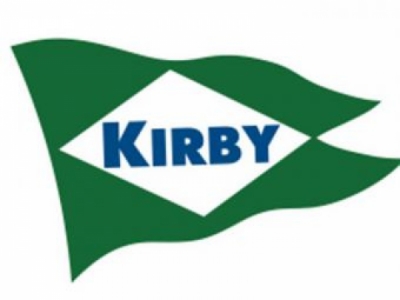
Posted on August 4, 2020
Houston headquartered Kirby Corporation (NYSE: KEX) reported net earnings for the quarter ended June 30, 2020 of $25.0 million, compared with $47.3 million for the 2019 second quarter. Consolidated revenues for the quarter were $541.2 million compared with $771.0 million in the 2019 second quarter.
“The dramatic economic slowdown associated with the COVID-19 pandemic in the second quarter was felt across our marine transportation and distribution and services businesses,” said President and CEO David Grzebinski. “We responded by aggressively lowering costs across the company and were able to generate solid earnings and strong cash flow. Although the demand impacts have continued into the third quarter, activity appears to have bottomed and is starting to slowly improve.
“In marine transportation, with demand for many liquid products down significantly during the quarter, refiners scaled back their utilization levels into the high 60% range before it gradually improved into the mid-70% range, and chemical plant utilization fell to near 70%. As a result, demand for barge transportation weakened as the quarter progressed, and when combined with favorable summer operating conditions, our barge utilization fell into the mid-70% range in inland and the low 70% range in coastal by the end of June. To offset the impact of these activity declines, we aggressively implemented additional cost reductions across the business, significantly reducing horsepower, operating costs, and general and administrative expenses. Despite a 6% sequential reduction in segment revenue, our cost reduction efforts contributed to a sequential improvement in segment operating margins from 12.6% to 13.5%.
MARINE TRANSPORTATION
Marine transportation revenues for the 2020 second quarter were $381.0 million compared with $404.3 million for the 2019 second quarter. Operating income for the 2020 second quarter was $51.4 million compared with $53.2 million for the 2019 second quarter. Segment operating margin for the 2020 second quarter was 13.5% compared with 13.2% for the 2019 second quarter.
In the inland market, average barge utilization was in the mid-80% range during the quarter compared to the mid-90% range in the 2019 second quarter. Barge volumes were heavily impacted by reduced demand for refined products and petrochemicals. Operating conditions were fair with improved weather conditions across the waterway network and reduced flooding on the Mississippi River. Lock delays remained elevated during the quarter. Overall, these conditions resulted in 2,815 delay days or a reduction of 15% compared to the 2019 second quarter. As a result of lower barge utilization, average spot market pricing for the quarter declined in the mid-to high single digits both sequentially and year-on-year. Average term contract pricing on expiring contracts was stable. Revenues in the inland market declined 2% compared to the 2019 second quarter due to the impact of reduced barge utilization and lower fuel rebills, but were partially offset by the Savage Inland Marine asset acquisition which closed on April 1, 2020. During the second quarter, the inland market represented 80% of segment revenues and had an operating margin in the mid-to high teens.
In the coastal market, as a result of reduced demand for refined products and black oil transportation, barge utilization was in the mid-70% range during the 2020 second quarter compared to the mid-80% range in the 2019 second quarter. Spot market activity declined throughout the quarter; however, spot market and term contract pricing were stable. Revenues in the coastal market declined 17% compared to the 2019 second quarter as a result of reduced spot market activity, retirements of two large capacity vessels, and planned shipyard activity. The coastal market represented 20% of segment revenues and had a breakeven operating margin during the quarter.
OUTLOOK FOR 2020
Commenting on the 2020 full year outlook, Grzebinski said, “In the past quarter, our businesses experienced unprecedented declines in demand as a result of the COVID-19 pandemic. Recently, we have seen slight increases in demand across the company which we believe represent an initial recovery and a bottom to our activity and utilization levels. However, given the risk of future spikes in virus cases and governments issuing new restrictions, the timing and magnitude of a material recovery remains unclear. Until we see a significant improvement in demand, we will continue to aggressively manage our costs, restrain capital spending, and focus on cash generation. Kirby has ample liquidity, and we continue to expect strong free cash flow in 2020 which will be used to repay debt, increase liquidity, and strengthen the balance sheet.”
In inland marine, although refinery and petrochemical plant utilization rates have started to improve, Kirby expects a slow recovery going forward until economic activity rebounds more significantly. With barge utilization rates starting the third quarter in the mid-70% range, the company anticipates sequentially lower average barge utilization for the quarter. This is expected to have an adverse impact on revenues and operating margins. Overall, Kirby expects inland revenues and operating income will sequentially decline in the third quarter.
In the coastal market, with 85% of revenues under term contracts, much of coastal’s business is expected to be stable through the end of the year. The spot market remains challenging, but reduced shipyard maintenance is expected to benefit the third quarter’s results. Kirby plans to retire one additional large capacity vessel in the third quarter and expects reduced activity in the coal transportation business for the remainder of the year. Overall, Kirby expects coastal third quarter revenues and operating income will modestly improve sequentially.
CAPITAL SPENDING
Kirby says that, while it is committed to regulatory and recurring maintenance on the marine transportation fleet, capital spending is being stringently managed and that it expects 2020 capital spending to be approximately $150 million, representing a year-on-year reduction of approximately 40%.
Source: marinelog





